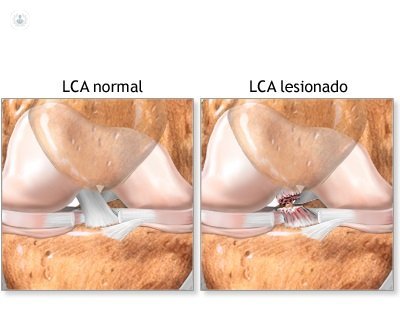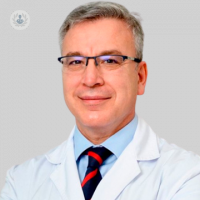Anterior Cruciate Ligament Injury
Written by:The ACL is a ligament located inside the knee with a diagonal arrangement, providing stability above the knee, and avoiding the anterior displacement of the tibia on the femur. It also provides rotational stability of the knee.
Causes of Anterior Cruciate Ligament Injury
Athletes who participate in high demand sports like football, rugby, basketball and handball have a higher incidence of anterior cruciate ligament injury, primarily by mechanisms such as:
- Rapid changes of direction
- decelerations
- Pending or declines to run
- Bad support during the phases of jump
- Collisions or direct contact (placaje in rugby)
In some cases, the cause is the presence of abnormal alignment or difference in length of lower limbs.

Operation Anterior Cruciate Ligament
ACL reconstruction
ACL injuries may not sutured, so it is necessary to reconstruct and thus restore normal knee function. The reconstruction of the injured ligament is performed by using tissue graft, such as the patellar tendon, hamstrings (tendons that run behind the thigh), sometimes can be used part of the quadriceps tendon or graft tissue bank (allograft).
ACL Surgical Procedure
ACL reconstruction is performed by the specialist Traumatology with a minimally invasive technique, such as arthroscopy, in which small incisions are used. The advantages of doing arthroscopic are generating minimal damage, allowing a very short hospital stay (sometimes on the same day patients can return home) and a faster recovery.
Postoperative Anterior Cruciate Ligament
The graft used as the new ACL takes time for integration or incorporation by the body itself, it may be 6 months or more after the procedure, before a patient can return to their sport.
A standard protocol recovery requires:
- Initially, and for at least 4 weeks, the patient used crutches to allow progressively full support as comfort or safety.
- It will begin rehabilitation within 7-10 days of the surgical procedure.
- Activities of daily living without limits generally made from the 7th week.
- Many patients return to work from the 3rd week long as there was someone to take them , since driving is not allowed to meet the 6th postoperative week.
When you can resume sporting activity?
Joining sporting activity will depend on the sport to perform and other variables, such as muscle recovery and perceived sense of stability for the patient. Sports activities during rehabilitation:
- According to the patient's evolution, from the 2nd month, will begin exercises in swimming and biking without resistance.
- Between the 3rd and 4th month, the patient begins to run on flat surfaces.
- Between the 4th and 6th month, will run on any surface as possible to return to their sport, readaptándolo in all sporting gestures, excluding activities involving pivot or contact.
- From the 7th month, the patient returns to his sports activity without restrictions.


